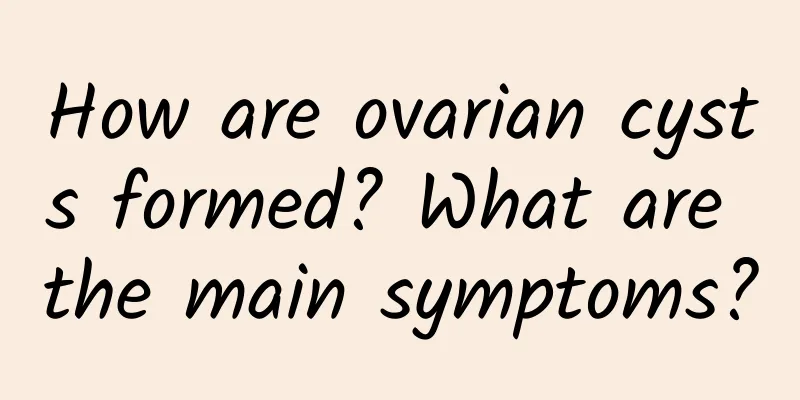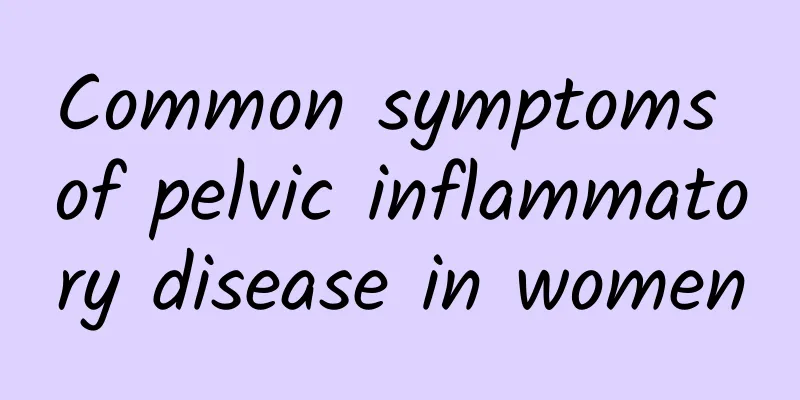What are the dietary taboos for women with cervicitis? Four methods of checking for cervicitis in women

|
Cervical erosion is the most common type of chronic cervicitis. It manifests as a fine granular red area in the vaginal part of the cervix at the external cervical opening. Cervicitis generally occurs inside the cervix, and cervicitis cannot be understood as a disease, but a general term for several diseases. Usually, in clinical practice, the following diseases are classified as cervicitis. 1. Cervical erosion This is the most common type of chronic cervicitis. It manifests as a fine granular red area in the cervical vaginal part of the external cervical opening. 2. Cervical hypertrophy Due to the long-term stimulation of chronic inflammation, the cervix becomes congested and edematous, and the glands and stroma proliferate, causing the cervix to hypertrophy to varying degrees. 3. Cervical polyps Under the long-term stimulation of chronic inflammation, the cervical mucosa proliferates locally. Due to the rejection effect of the uterus, the proliferating mucosa gradually protrudes from the cervical opening, forming polyps. 4. Cervical gland cyst Also known as Nabot's cyst, or Nabot's cyst for short, it is a small bluish-white cyst that protrudes from the surface of the cervix. 5. Endocervicitis That is endocervicitis. The inflammation is limited to the endocervical mucosa and the tissues underneath. Clinically, the vaginal part of the cervix is smooth, but the cervical opening is congested or blocked by purulent secretions. Four major examination methods for correct diagnosis of cervicitis Cervicitis is usually diagnosed through secretion examination, which is also called routine leucorrhea examination, including pH value, amine test, etc. Some women also undergo colposcopy and scraping examination. There are four general methods for checking cervicitis: 1. Cervical smear cytology examination This is a routine examination for gynecological cervicitis. It is simple, easy, cost-effective, and the most important auxiliary examination and the preferred initial screening method for cancer prevention surveys. 2. Iodine test and naked eye observation method This method is very simple and cheap, and can detect at least 2/3 of the lesions. As a preliminary screening method for cervical cancer, 3%-5% acetic acid solution is applied to the cervix. The reaction of the cervical epithelium to acetic acid is observed, and then a biopsy is taken from the white lesion area. 3. Colposcopy It can quickly detect lesions that are invisible to the naked eye and take biopsies from suspicious areas during colposcopy, which can significantly improve the accuracy of biopsies. 4. Gynecological examination Focus on checking the size, shape, texture, thickness of the cervical canal, and whether there is contact bleeding. Secondly, check the condition of the vulva, vagina, uterus, and paracervical tissues (ovaries, fallopian tubes, pelvic lymph nodes, etc.). If female friends find that they have symptoms of cervicitis, they should go to a professional hospital for examination and treatment in time to avoid delaying the disease. Women with increased leucorrhea should be alert to cervicitis Acute cervicitis causes purulent vaginal discharge, accompanied by pain in the lower abdomen and lumbosacral region, or bladder irritation symptoms such as frequent urination, urgency, and pain; chronic cervicitis causes milky white mucous discharge, or light yellow purulent discharge; severe cervical erosion or cervical polyps may cause bloody vaginal discharge or bleeding after sexual intercourse. Mild cases may have no systemic symptoms. When the inflammation spreads to the pelvic cavity along the uterosacral ligament, there may be pain in the lumbosacral region, a feeling of heaviness in the lower abdomen, and dysmenorrhea, which worsens with each bowel movement or sexual intercourse. In addition, the sticky and purulent leucorrhea is not conducive to the passage of sperm, so it is also likely to cause infertility. Therefore, cervicitis should be treated in time after it is discovered. Cervical polyps can be removed, and cervical erosion and cervical cysts can be treated with electrocautery and laser. Cervicitis diet taboos Cervicitis should pay attention to the following dietary taboos: 1. Avoid sweet and greasy foods: If you suffer from cervicitis, you should avoid eating overly sweet and greasy foods, such as candy, cream cake, eight-treasure rice, pork, mutton fat, egg yolk, etc., because these foods have a moistening effect, which will reduce the treatment effect of cervicitis and make it difficult to cure the disease. 2. Avoid eating seafood and other irritating foods: Common marine fish, shrimp, crabs, clams, abalone and other river fish and seafood are all irritating foods. If consumed during treatment, it will not be conducive to the disappearance of inflammation. 3. Avoid spicy, fried, and warm foods: such as peppers, onions, mustard, roasted chicken, beef, mutton, dog meat, etc. Because these foods are mostly hot, if patients eat them, they may get hot and get angry, which will aggravate the condition. 4. Avoid drinking: Tobacco and alcohol are very irritating and are warm and stimulating foods. If you do not stop smoking and drinking during treatment, it will not only be difficult to achieve the treatment effect, but it may also aggravate the condition. Experts recommend that female friends, if they do not feel any discomfort, insist on having a gynecological examination once a year so that they can better protect themselves. |
Recommend
Full launch! Zhang County conducts large-scale inspection of livestock and poultry meat products
In line with the central government's policy,...
What are the items for post-abortion review?
When it comes to abortion, many people are famili...
Can I get pregnant with intrauterine adhesions? The chance of pregnancy is low
Women can get pregnant if they have intrauterine ...
To avoid grease, barbecue should be served with white radish salad
(Author: Yasuyo Kishimura) When grilling, the mea...
Experts explain the causes of different degrees of cervical hypertrophy
Regarding cervical hypertrophy, many women want t...
What should be paid attention to when treating cervical erosion? Interpretation of common sense of treatment for female cervical erosion
We talk about many cases of cervical "erosio...
How much does it cost to completely cure chocolate cyst?
How much does it cost to completely cure chocolat...
What are the dangers of cervical warts?
What are the dangers of suffering from cervical w...
What should I pay attention to after ectopic pregnancy surgery?
What should I pay attention to after ectopic preg...
What are the measures to prevent cervical warts?
We all know that public toilets have both squat t...
Prevention of pelvic inflammatory disease starts with yourself
Should the prevention of pelvic inflammatory dise...
Experts introduce the symptoms of cervical precancerous lesions
The staging of cervical precancerous lesions is r...
Tony Yang lost weight for the movie and "dehydrated" himself, forcing out six-pack abs! Doctor: Beware of muscle cramps and five major complications of ischemic shock
The TV series "Light the Night" has bee...
Are pelvic inflammatory patches and uterine warming patches useful?
Pelvic inflammatory disease patches and uterus wa...
What are the hazards of congenital absence of vagina to women?
Congenital absence of vagina is a rare disease in...









